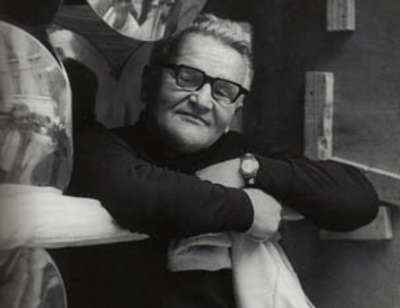Vojin Bakić is undoubtedly one of the most important Croatian artists, and as well recognized beyond the Croatian borders. Already in 1964 Herbert Read has included him in the review of modern sculpture (Modern Sculpture, A Concise History, Thames & Hudson). In his early works such as Bather (1942-1943), as well as portraits of S.S. Kranjcevic (1948) and I.G. Kovacic (1946) one can comprehend his sculptural excellence, though the figurative language is still present. It was a step toward modernism and abstraction that has made Bakić part of the history of European sculpture.
Bakić’s work occupies a key position in the art of former Yugoslavia: during the Cold War, abstraction in art was made the arena for quite different and opposing ideologies and their interpretations or appropriations. Bakić’s work rejected such simplifications from the 1950s onwards by employing abstraction – as an artistic grammar of forms – inside of the official, socialist art system.
Bakić’s art, the successes and difficulties he encountered during his life, as well as the current disregard that is shown towards him from official Croatian quarters, provide a touchstone with which one can explore various problems and figures in the post-socialist environment.


